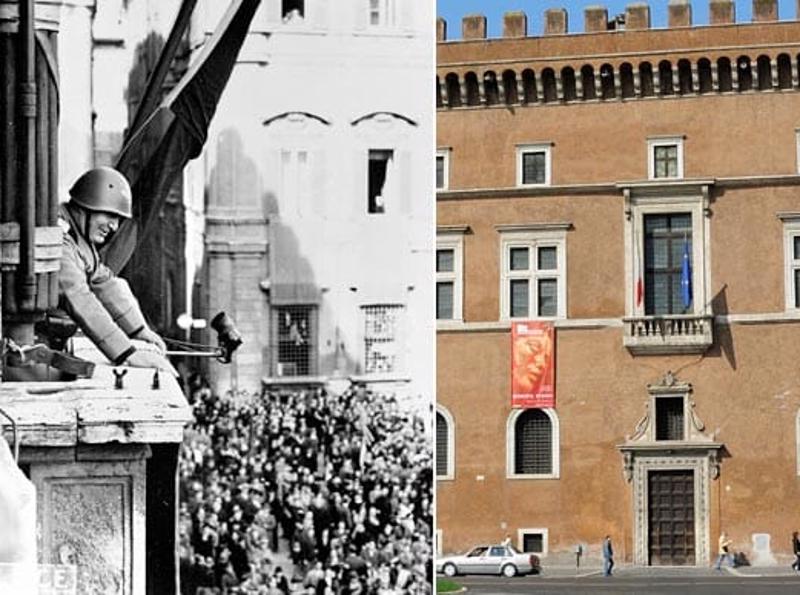Classics 304: Eternal Rome Digital Portfolio
After the Italian Risorgimento Italy didn’t take too long to get riled up in turmoil again. In the early 1900’s the Italian people began to become at odds with the government they had so recently fought for as the nation hit hard times. Throughout the early 1900’s after World War One Mussolini slowly gained power as he created fascism and the fascist party in Italy. This culminated in 1922 when he organized the march on Rome which saw thirty thousand fascist “blackshirts” march on the capital to demand the resignation of the then prime minister Luigi Facta. King Victor Emmanuel III who was in charge of the military at the time then handed Mussolini the position of Prime minister in order to try and restore order to Italy and avoid a civil war. Two years after his appointment Mussolini declared himself dictator of Italy and ruled until 1943. During this time the people of Rome would sit in the square in front of the Mussolini window and listen to his speeches and announcements. For some time Mussolini was very popular in his rule but eventually the people became tired of his mob-like tactics and deposed him. After his rule ended he fled for some time to Germany until he was captured by members of the communist party and executed in Milan.
kashford
22 chapters
16 Apr 2020
Chapter Eighteen: The Mussolini Window
After the Italian Risorgimento Italy didn’t take too long to get riled up in turmoil again. In the early 1900’s the Italian people began to become at odds with the government they had so recently fought for as the nation hit hard times. Throughout the early 1900’s after World War One Mussolini slowly gained power as he created fascism and the fascist party in Italy. This culminated in 1922 when he organized the march on Rome which saw thirty thousand fascist “blackshirts” march on the capital to demand the resignation of the then prime minister Luigi Facta. King Victor Emmanuel III who was in charge of the military at the time then handed Mussolini the position of Prime minister in order to try and restore order to Italy and avoid a civil war. Two years after his appointment Mussolini declared himself dictator of Italy and ruled until 1943. During this time the people of Rome would sit in the square in front of the Mussolini window and listen to his speeches and announcements. For some time Mussolini was very popular in his rule but eventually the people became tired of his mob-like tactics and deposed him. After his rule ended he fled for some time to Germany until he was captured by members of the communist party and executed in Milan.

1.
Introduction
2.
Chapter One: The Gemini Statues
3.
Chapter 2: The Largo Argentina
4.
Chapter Three: The Temple of Jupiter
5.
Chapter 4: The Via Sacra
6.
Chapter Five: The Colosseo
7.
Chapter 6: Statue of Augustus
8.
Chapter Seven: The Arch of Titus
9.
Chapter 8: Constantine's Basilica
10.
Chapter Nine: The Tiber River
11.
Chapter 10: The Sarcophagi
12.
Chapter 11: Caesars Forum
13.
Chapter Twelve: St. Peters Basilica
14.
Chapter 13: Roman Sewers
15.
Chapter Fourteen: Egyptian Obelisk
16.
Chapter 15: The Pantheon
17.
Chapter Sixteen: Bernini Bridge
18.
Chapter 17: The Wedding Cake
19.
Chapter Eighteen: The Mussolini Window
20.
Chapter 19: Basilica of Saint Lawrence
21.
Chapter 20: The Piazza del Popolo
22.
Conclusion: The more things change